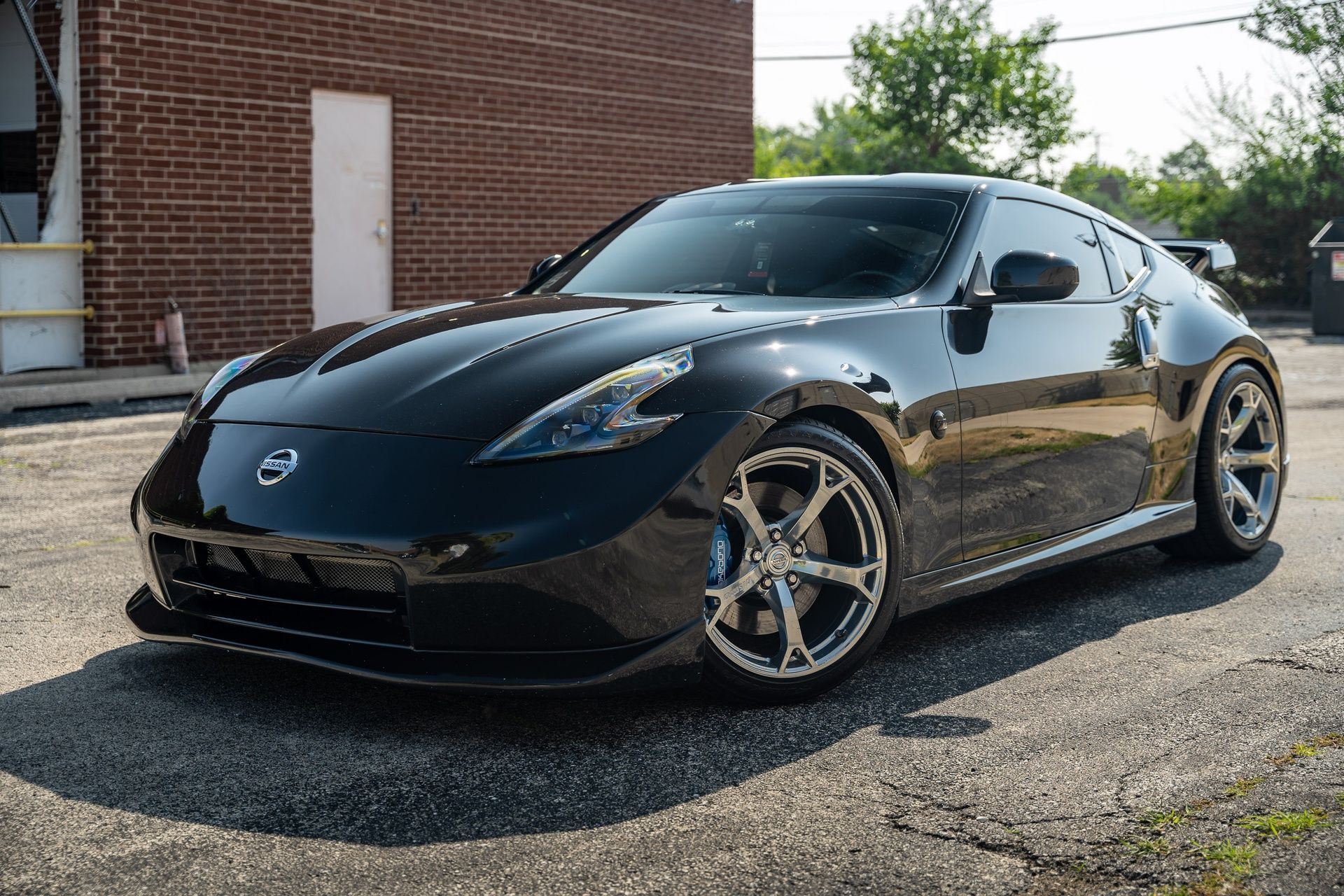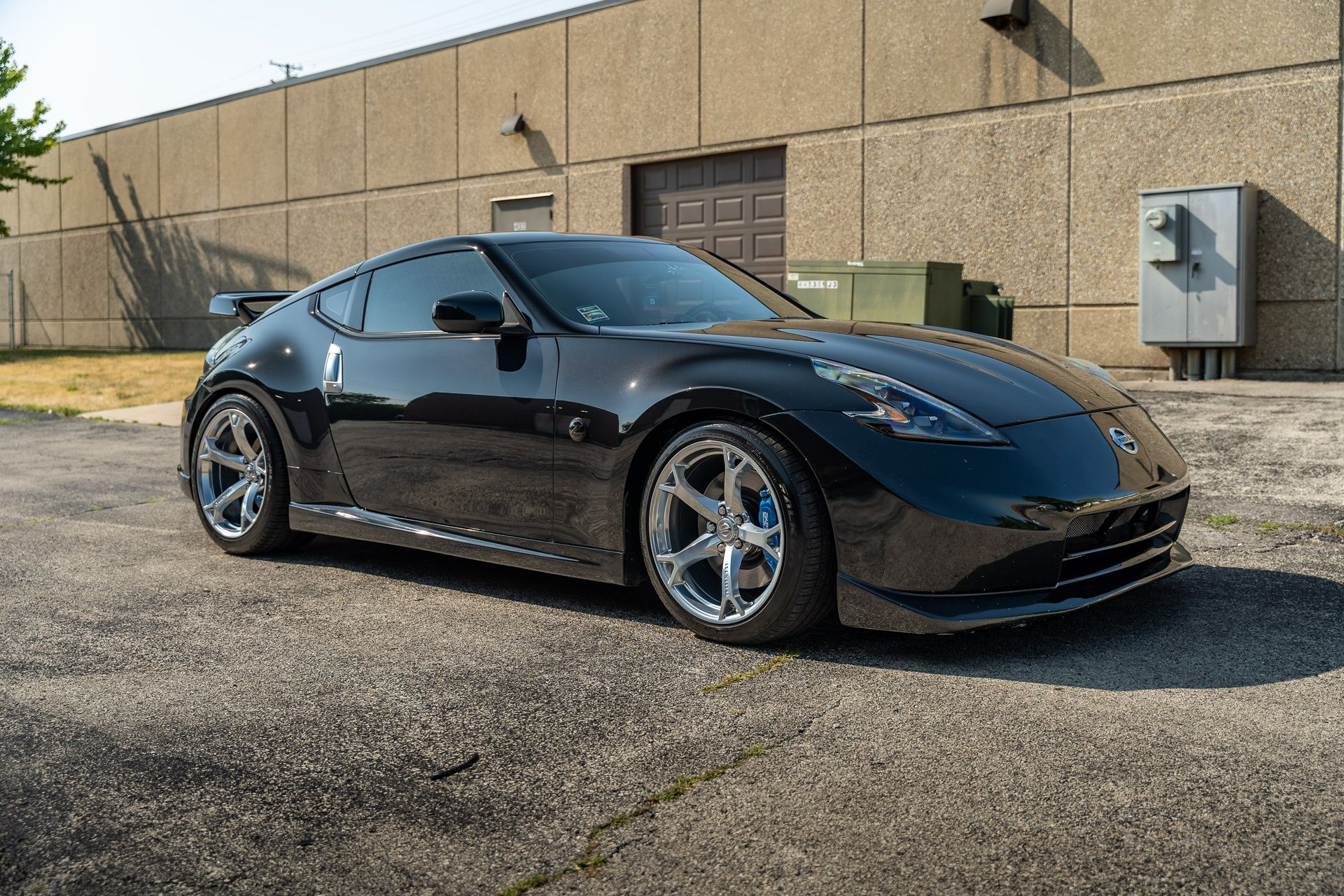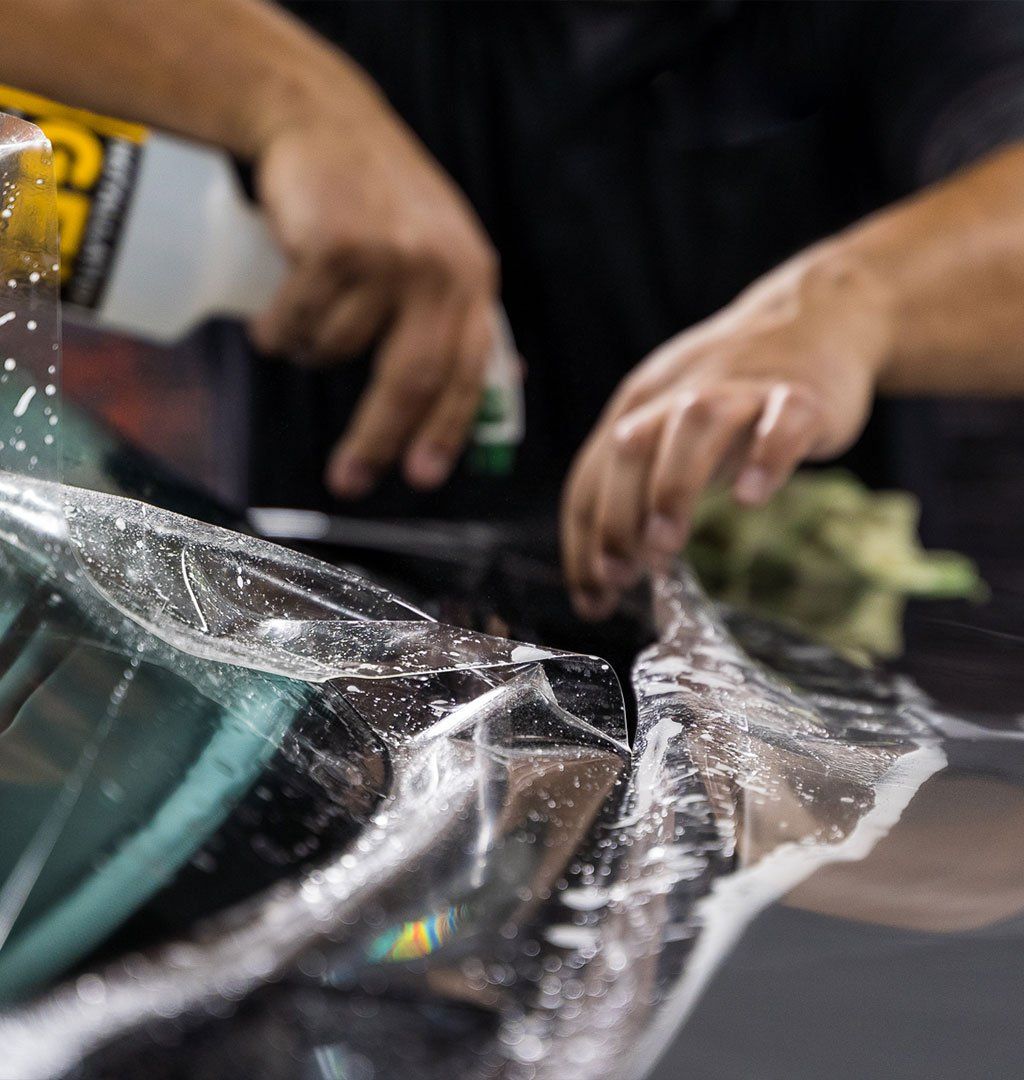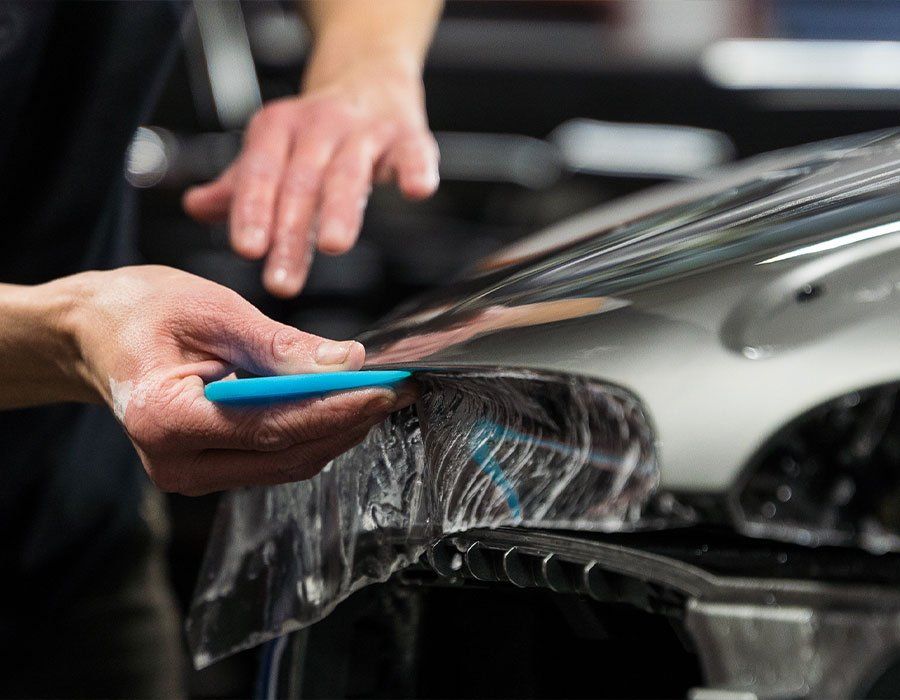PPF Thickness: The Best Options for Different Types of Vehicles
CALL (708) 574-8496
GET A FREE ESTIMATEWhen it comes to protecting your vehicle, paint protection film (PPF) is like a suit of armor for your car's paint job. Have you ever watched a beautiful SUV or sports car gleam under the sun, only to cringe at the thought of minor scratches and chips? This is where choosing the right thickness of PPF can make all the difference. With advancements in PPF technology, there's more to consider than just how it looks; factors like your driving conditions and how you use your vehicle play crucial roles in determining which film is best for you. In this article, we'll break down the most common PPF thickness options and guide you toward selecting the right one for your ride, ensuring that your investment stays looking new for years to come.
The best PPF thickness varies depending on the vehicle's intended use; for everyday city driving, a 5 mil thickness is generally sufficient, while off-road vehicles or those facing harsher conditions benefit from a thicker 10 mil film for enhanced protection against damage. Selecting the right PPF thickness ensures optimal safeguarding of your vehicle's paint finish based on its specific driving environment and usage.
Why PPF Thickness Matters
When considering paint protection film (PPF) for your vehicle, the thickness of the film can make all the difference. Just like choosing the right armor is critical for a soldier's survival in different environments, selecting the appropriate thickness for your PPF ensures that it meets your vehicle’s needs while offering an ideal balance between durability and aesthetic appeal.
Imagine a soldier gearing up for a mission—if they wear armor that's too thin, they're exposed to unnecessary danger from projectiles. However, opting for excessively thick armor can restrict movement and lead to fatigue. Similarly, a 5 mil film may be sufficient for the casual city commuter facing minor hazards like shopping carts and light rain. In contrast, a 10 mil film delivers the needed robust defense for off-road vehicles battling rocks, mud, and unpredictable terrains. Studies show that vehicles equipped with thicker 10 mil PPF experience a 30% better chance of maintaining their paint integrity under extreme conditions compared to those with just 5 mil film. This information emphasizes the critical role that thickness plays in preserving your investment.
Moreover, thicker films not only resist scratches and impacts more effectively but also feature enhanced self-healing properties. When exposed to heat from sunlight or other sources, these films often "heal" minor abrasions on their own, echoing nature's ability to repair itself. For example, if you happen to scratch your thicker PPF when washing or parking near another vehicle, it can return to its original state with minimal intervention—a revolutionary concept that protects both your wallet and outdoor appearances.
On top of durability benefits, it’s crucial to consider practical aspects like installation and weight when deciding on PPF thickness. A thicker material generally requires more expertise during installation due to its rigidity compared to thinner options, which are easier to apply across complicated curves found on luxury sports cars. While thinner films might bend more easily around intricate designs, thicker films may add extra weight—typically 1-2 pounds—potentially influencing performance indicators such as fuel efficiency.
Understanding these nuances in thickness can have significant implications when weighing options for protecting your vehicle effectively. Now, let's shift our focus towards exploring various types of films designed specifically for automotive applications.
Best Film Options for Cars
When it comes to selecting PPF for your car, understanding your driving environment and usage patterns is key. For city commuters grappling with daily wear and tear, a 5 mil to 6 mil PPF is often the best choice. This thickness strikes a balance between durability and flexibility, allowing it to absorb scuffs from minor scrapes without being too cumbersome. Reputable brands are widely regarded for their quality in this range, providing reliable protection against the rigors of urban driving. However, if you own a high-performance or luxury vehicle, the stakes change considerably.
City Commuters
For drivers who spend most of their time navigating city streets, a thinner film not only offers superior protection but also maintains the sleek aesthetic of your car. Many drivers report that a 5 to 6 mil film can effectively shield against small rock chips and scratches caused by other vehicles and urban debris. As an added bonus, this thickness is generally less noticeable on the finish, allowing the original paint color to shine through.
Additionally, while applying PPF may seem straightforward, it’s crucial to have it professionally installed. The efficacy of these films significantly relies on proper application techniques; an expert installer ensures that all edges are sealed correctly and that no air bubbles interfere with the film's performance.
High-Performance and Luxury Cars
For those with high-performance or luxury cars cruising at higher speeds, opting for an 8 mil film could provide enhanced protection suited to their needs. This thicker film is particularly effective in protecting against road debris impacts that can occur at speed, minimizing any risk of damage while still being designed to remain nearly invisible on premium models.
On top of that, many brands today offer specialized options tailored for different vehicles—whether it’s a family sedan or a sports car—making it easier than ever to find the right solution. By understanding how PPF thickness relates to specific driving environments and vehicle types, drivers can make informed choices that bolster protection while enhancing appearance.
As we explore solutions for larger vehicles in our next discussion, it's important to consider how different applications of PPF can enhance not just appearance but overall longevity as well.
Ideal Solutions for Trucks and SUVs
Given their rugged nature and intended use on diverse terrains, trucks and SUVs demand robust PPF solutions to shield against the harsh realities of daily wear and tear. Larger, heavier-duty vehicles are particularly susceptible to damage from rocks, gravel, mud, and elements found both on highways and off-road trails. This highlights the importance of selecting the appropriate thickness of PPF.
For everyday usage, aim for at least 8 mils of thickness in your PPF. This offers a solid barrier against minor abrasions and environmental factors. However, if your vehicle often tackles off-road challenges or rough environments, consider bumping up the thickness to 10 mils or opting for multi-layered options designed specifically for extreme protection.
Popular models like the Ford Raptor—famed for its rugged capabilities—benefit immensely from this approach. Wrapping such a vehicle in a multi-layered 10 mil film provides peace of mind and strategic shielding as it navigates uneven terrain filled with potential hazards. The added layer means that the paint underneath faces less exposure to chips from rocks or scratches from branches. According to industry experts, SUVs with thicker PPF experience 25% fewer severe paint damages over a five-year period compared to those with thinner films.
A potential downside is that thicker films can have higher installation costs due to increased material and labor involved. However, this expense often proves worthwhile as it helps prevent costly repairs caused by paint damage. While some users may worry about visibility or aesthetics with thicker applications, many high-quality films are designed to blend seamlessly with your vehicle's finish—maintaining its appearance.
The choice of thickness should align not just with how you use your truck or SUV but also with a comprehensive understanding of what level of protection you require. Regular maintenance checks will ensure your PPF remains intact and effective over time. These diligent assessments help maintain the integrity of your vehicle’s appearance while saving you from potentially hefty repairs down the line.
Exploring the details of protective films suggests that individuals seeking enhanced safeguarding should look into specific types suited for various vehicles. Let’s shift our attention to the best protective options available for two-wheeled machines.
Suitable Films for Motorcycles
Motorcycles, renowned for their sleek designs and exposed structures, require a particular approach when it comes to paint protection films (PPF). The choice of protective film is essential for maintaining the motorcycle's handsome appearance and safeguarding its surfaces from wear and tear caused by the elements. In this context, PPF with a thickness of around 5 mil to 6 mil emerges as an ideal option. These lighter films strike a balance between protection and flexibility, allowing the film to hug the curves of various motorcycle models adequately without compromising visual appeal.
However, it's crucial to avoid using PPF that is too thick. Thicker films tend to present visible edges on contours or tight spaces, drawing attention to themselves in an undesirable way. This not only undermines the motorcycle’s aesthetics but may also lead to complications during installation, especially around intricate areas like headlights or handlebars where precision is vital. Always choose a PPF that aligns with your motorcycle's design characteristics.
When looking for quality choices, reputable brands stand out due to their commitment to creating thinner yet robust options specifically tailored for motorcycles. These brands understand that motorcycles have unique shapes and surfaces requiring an adaptable film solution. Installing PPF on motorcycles also calls for expertise; local certified installers play an integral role in ensuring that the film is applied correctly. Their specialized training helps guarantee that the film adheres well without bubbles or imperfections, ultimately maximizing its efficacy. Thus, finding professionals familiar with motorcycle applications is highly recommended.
In making decisions about PPF thickness and type for motorcycles, consider both durability and aesthetic appeal as key factors influencing your choice. As we explore more advanced features of vehicle protection solutions, it's essential to look at innovative technologies that enhance film performance even further.
Self-Healing and Specialty Films
Self-healing films represent a remarkable advancement in paint protection technology. Picture this: a minor scratch or swirl on your car’s beautiful surface can be an eyesore, especially for enthusiasts who appreciate every detail. That's where self-healing PPF steps in. It typically features a durable urethane layer that reacts when exposed to heat or sunlight, enabling those annoying little scratches to disappear over time.
As a vehicle owner, you can appreciate how transformative this capability is. Rather than fretting over every small scratch, you can relax knowing that the film’s elastomers will do their work—essentially making the blemish vanish like magic days after it has appeared. This unique feature not only preserves the aesthetic appeal but also prolongs the life of your vehicle's paint job.
Specialty Films
Now, let’s talk about specialty films, which push protective capabilities even further. Many of these films boast hydrophobic properties, meaning they repel water effortlessly. Not only does this keep your vehicle looking sharp, but it also means cleaning becomes a breeze. Imagine rainwater gliding off your car rather than adhering to its surface! However, some users may argue that specialty films come with a higher price tag and are unnecessary for everyday drivers. Yet consider this: when investing in your vehicle’s longevity and appearance, think of specialty PPF as more than just a luxury—it’s an investment in convenience and peace of mind.
Sure, traditional options might do the job adequately, but why not choose a product that offers superior features? When weighing whether to opt for standard or specialty films, reflect on how often your vehicle is exposed to harsh elements or high-traffic environments. The potential benefits could significantly outweigh the initial costs. As we continue exploring various aspects of paint protection film, remember that understanding your specific needs and driving habits will lead you to the ideal choice for safeguarding your vehicle's appearance and longevity.
Optimizing the Application Process
Proper application of PPF requires more than just selecting the film; it involves a series of meticulous steps that can elevate the final outcome. First and foremost is the preparation of the vehicle's surface. Before diving into the application, take the time to clean your vehicle thoroughly. Using a pH-neutral soap along with microfiber cloths, ensure that you remove any dirt, grease, or contaminants. Even tiny specks of dust can lead to unsightly bubbles or imperfections once the film is applied. As you prepare your vehicle, it's also essential to have all necessary equipment ready at hand.
Preparation and Equipment
In addition to cleaning supplies, invest in specialized tools such as squeegees, heat guns, and detailed sprayers. These are crucial for achieving a flawless finish. A squeegee helps to push out any air bubbles while ensuring a tight seal against the surface of your car. When using a heat gun, exercise caution; it can soften the film, allowing it to stretch and conform to curves smoothly—an invaluable tip for those complex curves around fenders or bumpers. Once you’ve prepared both your vehicle and your tools, consider whether you want to tackle this project yourself or hire a professional.
Professional vs. DIY
Professional installation comes at a cost, typically ranging from $500 to $2,000 based on coverage area and service provider expertise. Despite the higher price tag, opting for professionals ensures guaranteed results, often accompanied by warranties that protect your investment. On the other hand, DIY kits can provide significant savings for more hands-on car enthusiasts. However, while tempting due to their lower price point, these kits demand research and practice before achieving professional-level quality.
Regardless of which route you choose—professional or DIY—the importance of preparation remains paramount to ensure your application goes off without a hitch. In summary, understanding the essentials of PPF application can significantly enhance the longevity and appearance of your vehicle's protection.
Protect Your Paint with Precision in Carol Stream, IL
Shield your vehicle from road debris, harsh weather, and daily wear with D’Andrea Auto Detailing’s expert paint protection film (PPF) services in Carol Stream, IL. Our high-quality PPF offers an invisible barrier that helps preserve your car’s flawless finish while making maintenance easier. With precision installation and premium materials, we ensure long-lasting defense without compromising your vehicle’s appearance. Keep your paint in top condition—schedule your PPF service with D’Andrea Auto Detailing today!
D’Andrea Auto Detailing was founded in 2021, setting out to be part of the solution to the obstacle of achieving automotive protection and perfection in the often messy Midwest city of Carol Stream, Illinois. We provide two types of high-quality vehicle paint protection services - Undrdog Ceramic Coatings and XPEL Paint Protection Films - alongside individual interior rejuvenation and exterior decontamination services. We aim to help both top-tier sports cars and daily drivers always look their best and operate even better!
Quick Links
Hours of Operation
Monday-Friday: 8:00 AM - 5:00 PM
Saturday - Sunday: Closed
This website was designed by the team at
Detailers Roadmap, a platform developed for detailing operators across the globe.
All Rights Reserved | 8bitcreative, LLC | D’Andrea Auto Detailing





